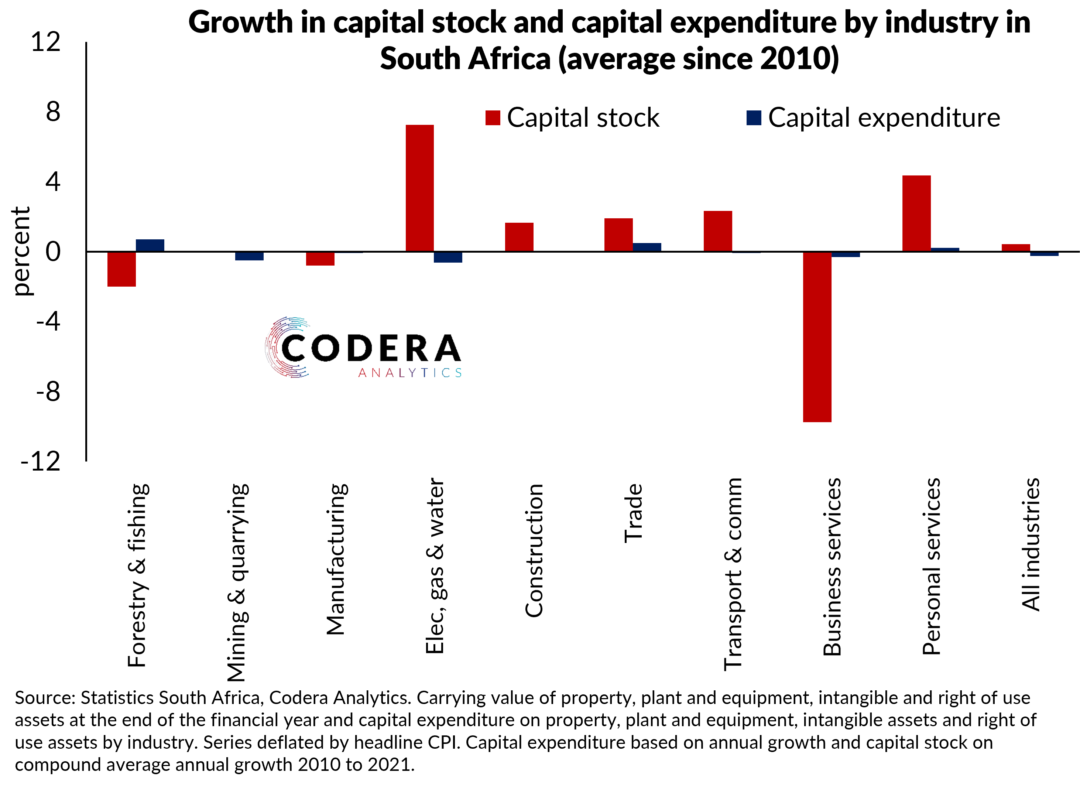This chart provides a number of insights into the structure of South Africa’s labour market by distinguishing between employment levels by sex and industry, based on the Quarterly Labour Force Survey (QLFS). The QLFS surveys households and thus covers both the formal and informal economy, and uses the Standard Industrial Classification.
Employment levels are largest in community and social services (reflecting the large amount of employment in the public sector) and wholesale & retail trade. While employment growth since 2010 has been low in most industries, there are a couple of exceptions, such as female employment in community and social services and male employment in finance. The biggest differences in employment levels by sex are in construction and transport (with more men employed than women) and community and social services and private households (with more women employed than men). Employment in private households includes domestic workers, who made up 6.1% of the employed population in 2018, and who earned only R22 per hour (gross; May 2023 rands) at the 75th percentile, weighted across South Africa. Employment in manufacturing is also decreasing. It is likely that employment was underestimated in the series for agriculture prior to 2015, possibly owing to a shift in how many informal farmers were counted as employed.
We have recently added aggregate QLFS statistics to our EconData platform. You can access this if you are a subscriber; see details here: https://www.econdata.co.za/support


